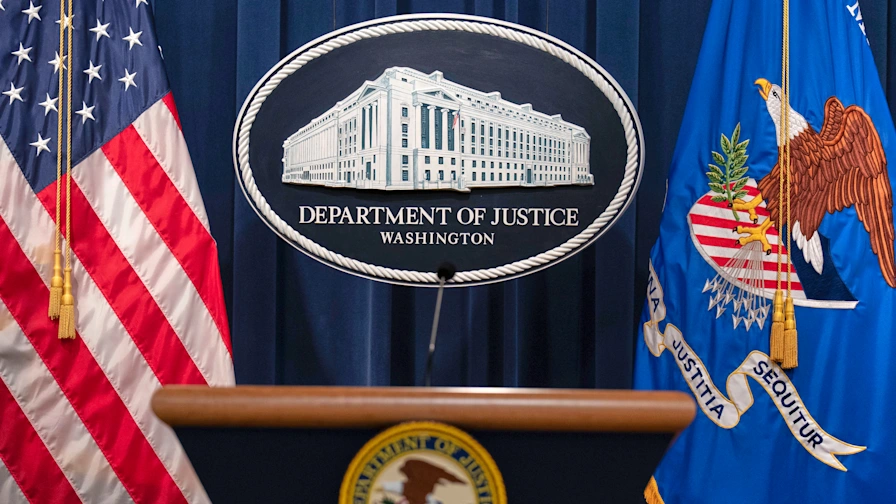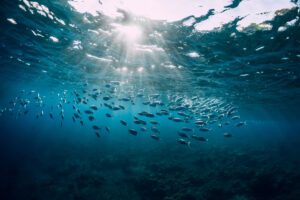A pay-for-success Conservation Impact Bond demonstrates how Indigenous environmental knowledge combined with impact financing and investing can support conservation of natural resources
Like so many other important and fragile ecosystems around the world, Canada’s Carolinian Zone, an ecoregion in southern Ontario that contains more than 500 rare and endangered species and provides drinking water for 11 million people,1 is under threat from expanding agricultural activity and human population. While the zone helps support 25% of Canada’s population and 90% of its endangered species, only 11% of its forest remains.
In the last few years, however, some of that damage has been repaired with the help of a unique financial instrument developed by a collaboration between a broad range of stakeholders including conservation organizations, multinational lenders and corporations, the Canadian government, and the local Indigenous Peoples, Deshkan Ziibiing (Chippewas of the Thames First Nation), which could serve as a model for how financial institutions can help fund biodiversity preservation around the world, according to a report by Deloitte.
Biodiversity loss and habitat degradation pose significant risk for the environment’s ability to support human life and to help mitigate the climate crisis. They also carry significant financial risks for banks and other financial institutions. According to the Deloitte Center for Financial Services, U.S. banks have at least $1.7 trillion in loan exposure to sectors that face the potential loss of “natural capital”—an umbrella term covering geological resources, soil, air, water, and all living organisms.2 On a global scale, some $44 trillion of economic value generation relies on the health and well-being of global ecosystems and natural resources. The cost of inaction in protecting nature—and the collapse of ecosystem services—amounts to about $2.7 trillion a year.3
The Paulson Institute, in partnership with The Nature Conservancy and the Cornell Atkinson Center for Sustainability, estimates that an average of $711 billion more than current funding levels needs to be spent each year to reverse the decline in biodiversity by 2030.4 The World Wildlife Fund calculates that between $300 billion and $400 billion in investment is needed to preserve and restore ecosystems alone, of which only about $52 billion is occurring each year.
As wardens of financial capital, financial institutions can play a pivotal part, both in improving access to private funding for projects that help achieve these objectives and in introducing bankable nature-based solutions as well. The Deloitte report, “Natural capital: The nexus between climate, nature, and Indigenous Peoples,” shows how financial institutions can strengthen their efforts to protect natural capital and increase climate resiliency by partnering with and learning from Indigenous Peoples, who often have longstanding track records of being responsible stewards of natural capital.
“Plenty of banks and other financial sponsors recognize the importance of putting biodiversity on the business agenda and want to preserve natural capital when financing development projects,” says Ricardo Martinez, a principal with Deloitte Risk & Financial Advisory at Deloitte & Touche LLP. Indeed, 170 financial institutions worldwide with more than $20 trillion in assets have signed the Finance for Biodiversity Pledge, committing to protect and restore biodiversity through their activities and investments. According to the UN’s 2021 State of Finance for Nature report, around $133 billion per year is invested in nature-based solutions, with private finance accounting for only 14% of that total.
The Deloitte report lays out a social and business case to be made for protecting Indigenous land and human rights and how banks can pursue a nature-positive agenda in their financing activities. “It’s important to all of us that First Nations Peoples can continue to practice nature-based solutions as they have been doing for centuries to protect vital ecosystem services—from protecting forests and wetlands to protecting communities and infrastructure from floods, soil erosion, and landslides,” says Sarah Haley, advisory senior manager at Deloitte & Touche LLP. She notes, for example, that Indigenous Peoples are considered to have pioneered environmentally sustainable practices5 such as agroforestry, crop rotations, and the use of controlled burns to reduce the risk of catastrophic wildfires.
Supporting the Environment and Indigenous Nations: Conservation Impact Bonds
While the past centuries have witnessed Indigenous Peoples being dispossessed and pushed off their lands, they are now becoming sought-after partners in the urgent efforts to preserve and restore natural capital. The Deloitte report cites the example of funding the restoration and protection of the Carolinian Zone by a pay-for-success conservation finance model called a Conservation Impact Bond (CIB). The CIB offers investors a chance to recoup principal plus a profit margin if specified healthy landscape outcome targets are achieved.6
In its initial pilot phase, the Deshkan Ziibi CIB (DZCIB) improved more than 170 acres of habitat, planted nearly 40,000 native plants, and engaged hundreds of people in educational activities. The Canadian government has subsequently provided additional funding to help launch a Phase 2 of the project that would accelerate both conservation and green economic development.7
“Initiatives like the DZCIB show that Indigenous Peoples can play important leadership roles in identifying and implementing solutions to protect nature and prevent the collapse of essential ecosystem services,” says Haley.
In 2022, DZCIB won the Climate Leader award from Finance for the Future, which recognizes organizations and individuals that are integrating sustainability into financial decision making. In granting the award, Finance for the Future praised DZCIB for its efforts to work collaboratively and equitably with First Nations communities while combining Indigenous approaches to nature with impact financial mechanisms.8
Enlisting Indigenous People Can Help Balance Climate Action and Nature Preservation
Banks have a responsibility to protect human rights as part of the social pillar in their environmental, social, and governance (ESG) agendas, says Martinez. But financial institutions may sometimes face tough choices between competing environmental and social objectives.
For instance, many proposed renewable energy products including hydropower facilities, wind farms, and lithium mines may impact Indigenous territories. “Before agreeing to finance such green economy transition projects, lenders can seek to confirm whether adequate environmental and social impact assessments have been performed, whether Idigenous Peoples and local communities (IPLCs) have given their informed consent, and whether IPLCs have been invited to participate as stakeholders or co-owners,” Martinez says.
A similar scenario applies in the international carbon market, where both public and private sector players are racing to acquire the right to sequester carbon in many areas, including Indigenous lands. “Financial industry participants who get involved in these types of carbon sequestration initiatives can take a high-integrity and rights-based approach by involving Indigenous Peoples throughout these projects from design and implementation to monitoring and reporting,” remarks Haley. She notes it can be helpful to establish clear mechanisms early on for filing and addressing any grievances that IPLCs may have with a sequestration project.
Any green economy development project on Indigenous lands has the potential to cause some harms, so one way to evaluate a development project is to consider whether it has a net positive or negative effect on nature in a given area. “The United Kingdom has already formalized this concept of biodiversity net gain (BNG) in its 2021 Environment Act, which took effect in 2024. It requires that developers have a plan to leave the natural environment in a better state than when the project began,” says Ralitza Dountcheva, the Sustainability, Climate and Equity practice manager for Deloitte & Touche LLP. In fact, most new developments in the United Kingdom must now show a BNG of at least 10%.9

Source: “Natural capital: The nexus between climate, nature, and Indigenous peoples,” Deloitte, 2024
While it is obviously not the law of the land in most of the world, Martinez says that it can provide guidance to financial institutions in the United States and elsewhere that are evaluating a green economy development project—whether on Indigenous lands or not. “Lenders can ask developers to explain whether their project will yield net gains in wildlife habitat or species protections and how they will do so. If the project owners don’t have experience with conservation, this could be a perfect opportunity to call upon the expertise of Indigenous communities who have many years of practical experience managing natural capital in sustainable ways,” says Martinez.
—by Aaron Dalton, freelance writer, Executive Perspectives in The Wall Street Journal
1. “Carolinian Canada,” Carolinian Canada Coalition.
2. “Natural Capital,” Convention on Biological Diversity, 2021.
3. https://www3.weforum.org/docs/WEF_New_Nature_Economy_Report_2020.pdf
4. https://www.paulsoninstitute.org/wp-content/uploads/2020/09/CBD-Full-Report-Endorsements-.pdf
5. Indigenous Fire Practices Shape our Land – Fire (U.S. National Park Service) (nps.gov)
6. “Conservation Impact Bond: An innovative new tool for scaling collaboration and investment for landscape-scale conservation,” Ivey Centre for Building Sustainable Value and Carolinian Canada Coalition, 2022.
7. “Scaling up one of Canada’s most innovative conservation finance solutions,” Ivey Business School, November 2021.
8. “Deshkan Ziibi Conservation Impact Bond: Co-creating a new approach to financing conservation, Climate Leader,” Finance for the Future, 2022.
9. “Understanding biodiversity net gain,” GOV.UK, February 2024.












